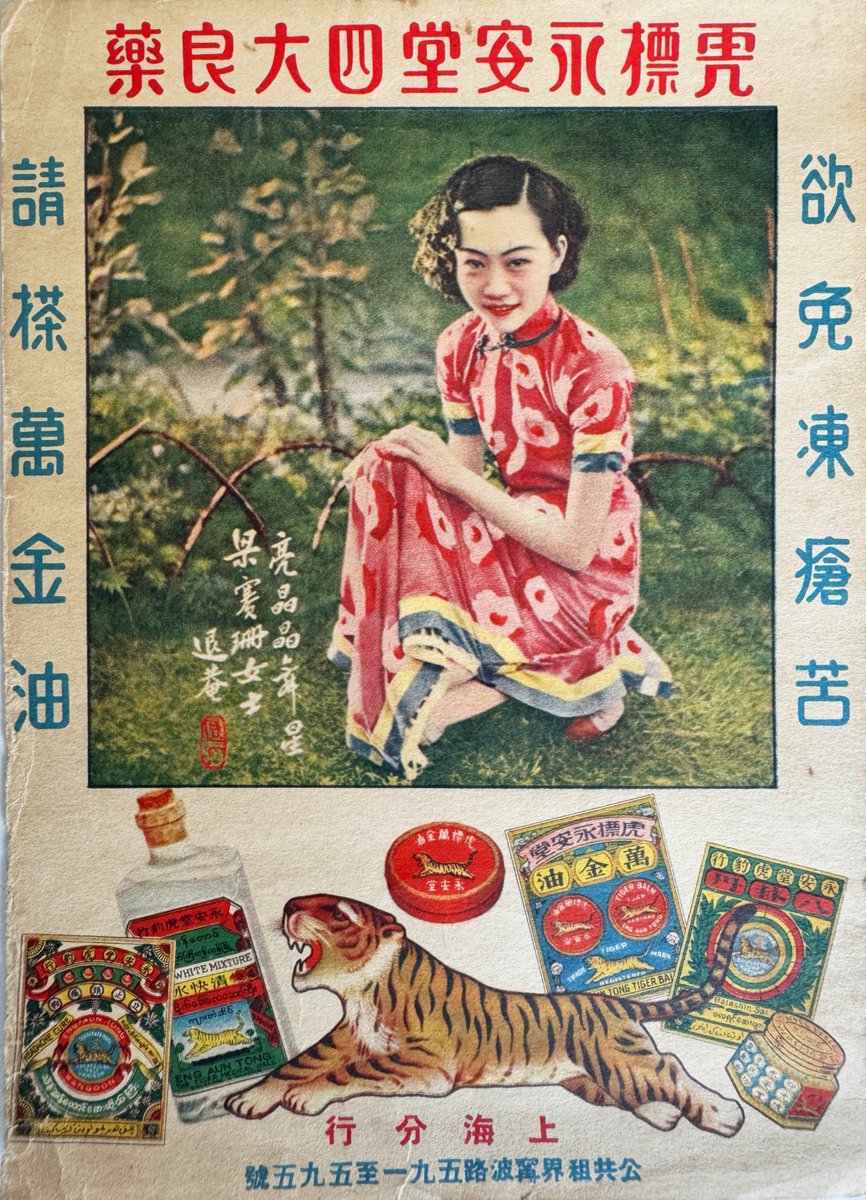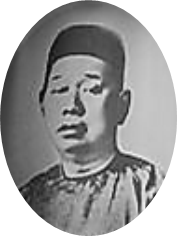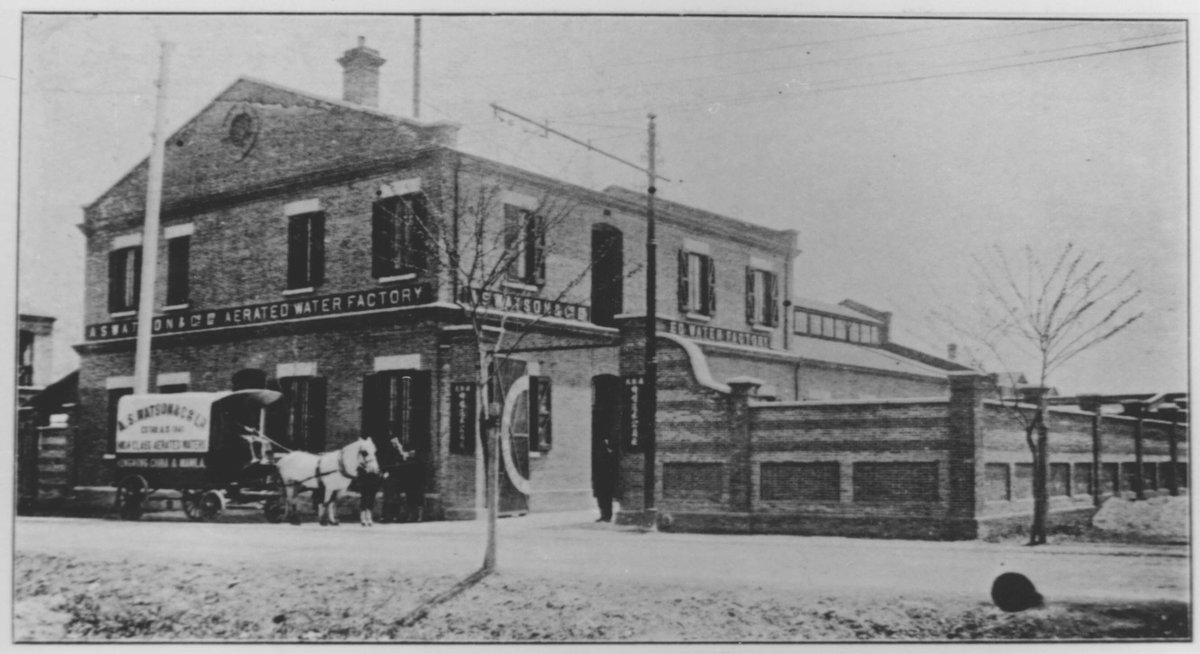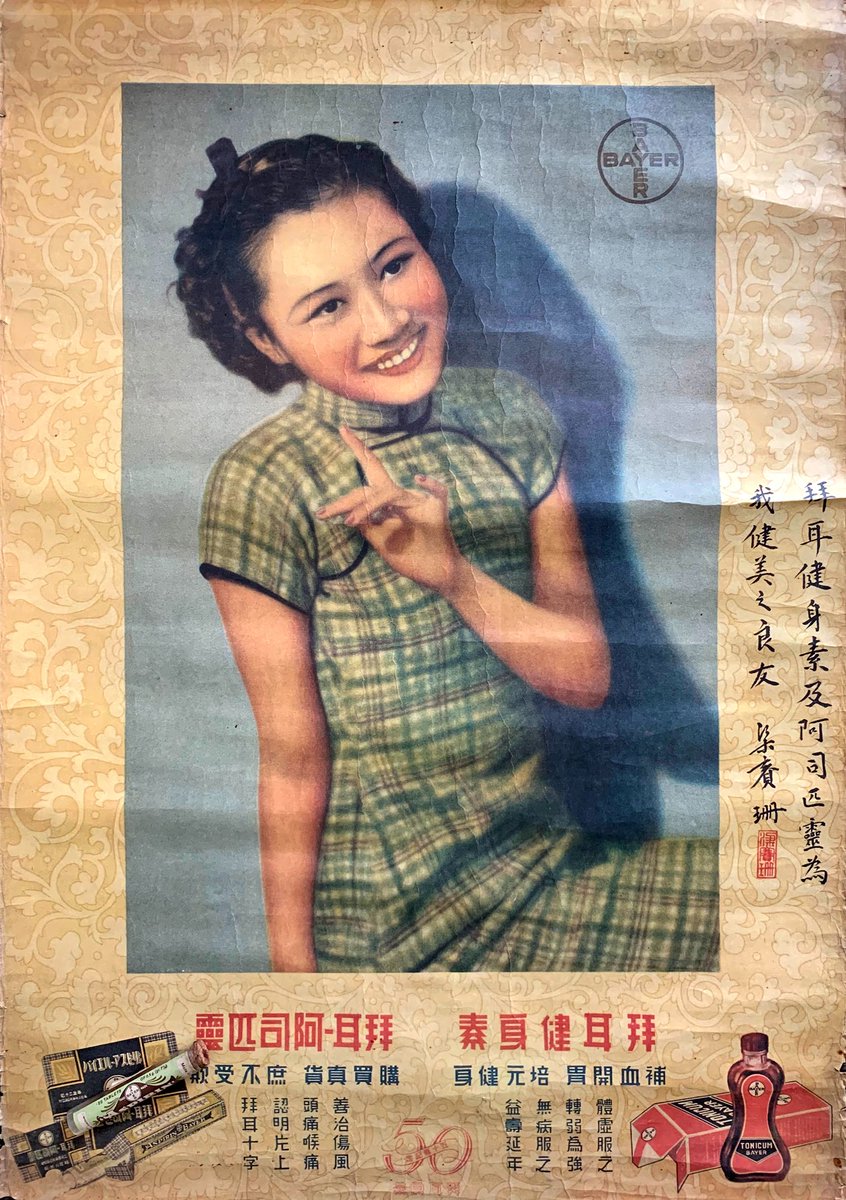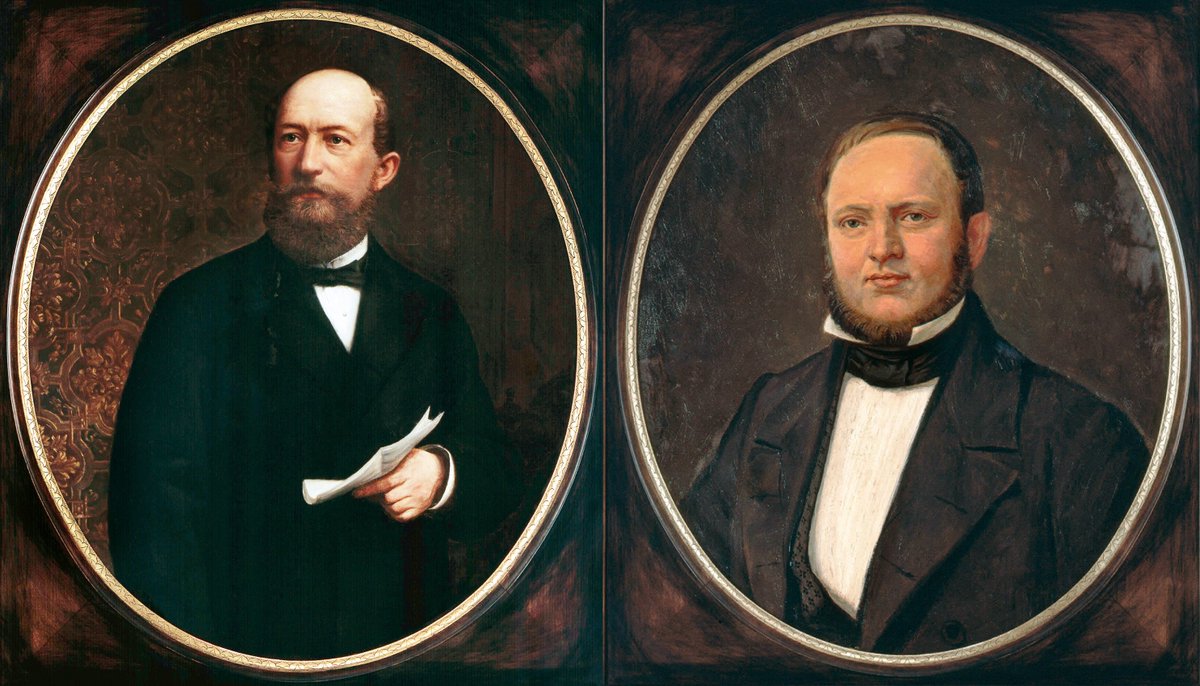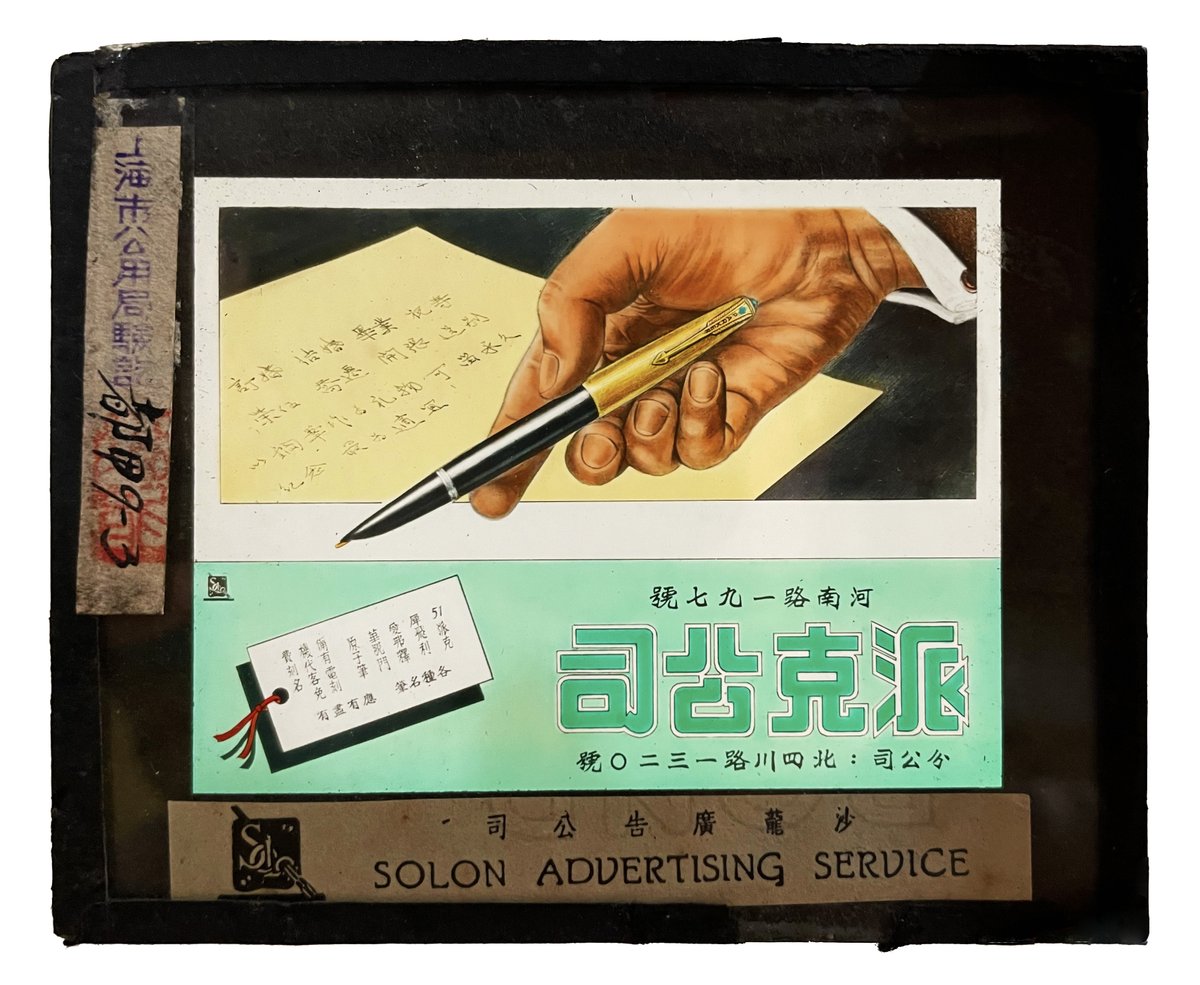Cookies, crime & lasting legacies: This inconspicuous biscuit box holds a story of Shanghai’s largest finance scandal but also enduring memories of one of its oldest consumer brands. The category-defining success story of a Western businessman in China you've never heard of: 🧵⬇ 

The crumb trail of Bakerite leads us back to the American J.D. Sullivan, who after serving in the Spanish War, came to China at the turn of the century & established the Denniston & Sullivan photo supplies store on Broadway (Daming Rd.) in the Shanghai International Settlement. 

In June 1906 Sullivan sold the business to former employees Messrs. L.L. Hopkins and J.J. Gilmore who continued to operate it but moved the location to Nanking Rd. (todays Nanjing East Rd.). James Sullivan left China to get married in the USA in December 1906. After his return... 

to Shanghai in 1908, he used the proceeds from the sale of his previous business to start a new large scale and state of the art photography studio next to the Astor House Hotel on Broadway, called Burr Photo Co. The workshop was a busy place and to entertain its customers... 

Sullivan and his wife Josephine also in 1908 opened Sullivan’s Candy Store right next door. Over the years this confectionery shop and bakery became immensely popular, not only among the foreign residents of Shanghai, but also the Chinese. 

Especially its cookies hit a nerve: to this day “So-li-ven” is used as a synonym for fruit biscuits in the local Shanghainese dialect. The business of the candy store thrived and in around 1914 Sullivan’s moved across Suzhou Creek to... 

No. 11 Nanking Rd & expanded to a full-fledged restaurant w/ adjacent bakery & confectionery store. The new English name was Sullivan's Fine Candies & the Chinese name changed to Shālìwén (沙利文), reflecting how the locals had already referred to the store for close to a decade. 

Legend has it, Sullivan’s bread, complimentary w/ lunch sets at the restaurant, single-handedly popularized the staple food, previously unknown to the Chinese. In 1920 Sullivans moved to a bigger location on 36 Nanking Road, eventually with a total of 230 seats for the restaurant 
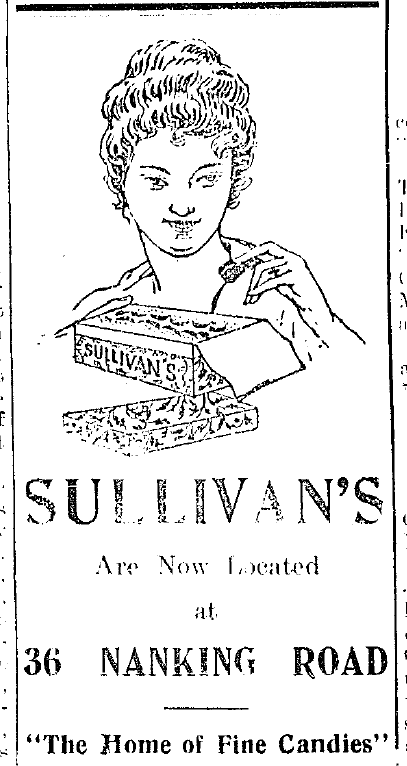
By 1921 institutional investors got wind of the booming Shanghai pastry & bakery market and Bakerite Co. Federal Inc. USA was formed. The company bought an old textile mill and turned it into a factory to manufacture food, candies, cookies, ice cream, and “all the good stuff” 

The same year Bakerite acquired Sullivan’s, renamed the restaurant to The Chocolate Shop and the bakeshop to the Bake-Rite Bakery. Even though Sullivan exited the business, the by now already legendary Chinese name was kept for the company 沙利文面包饼干糖果公司 & the restaurant. 

The new manager of the Chocolate Shop and president of Bakerite was the American Charles “C.H.” Raven, but its key shareholder was the Raven Trust Company – the holding company of Charles brother, the notorious Shanghai finance and real estate mogul Frank J. Raven. 

Raven was a Californian-born engineer and, just like Sullivan, a Spanish American War veteran. He arrived in China in 1904 to re-invent himself from a tea-totaling church goer to a self-made founder of a financial powerhouse based in Shanghai with an empire spanning banking, ... 
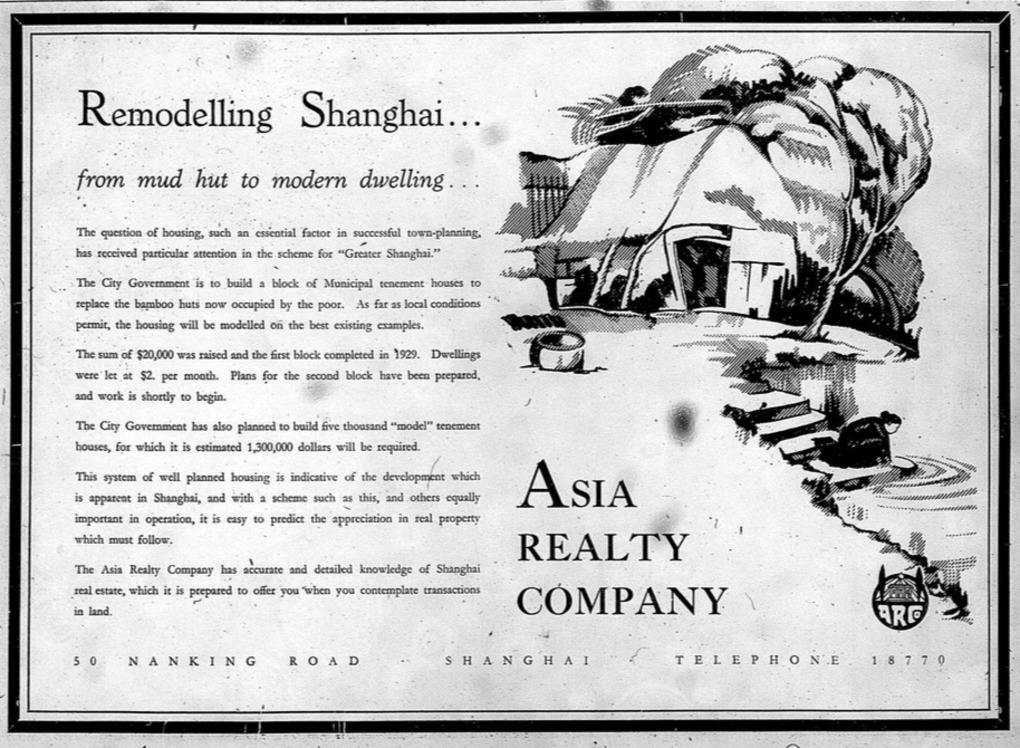
real estate, commodities & insurance. Raven’s economic clout can even be credited with the spawning of today’s American Insurance Group, better known as A.I.G. with his friendship and financial support to that company’s credited founder Cornelius Vander Starr in Shanghai in 1919. 

In 1925 a second location called “The Little Chocolate Shop” was opened on 565 Avenue Joffre (todays Huaihai Middle Rd.) in the French Concession. One year later the young advertising professional C.P. Ling was appointed as a director to the company and Bakerite became... 
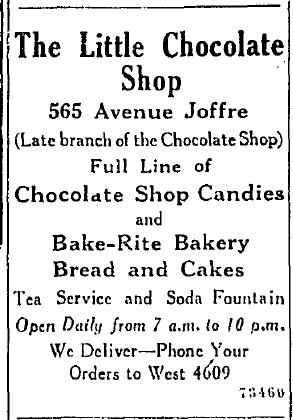
the first client for his newly formed China Commercial Advertising Agency (C.C.A.A.). In 1926 also the trademark “Bake-Rite” was formally registered, laying the foundation for the wholesale trade of packaged consumer goods such as cookies, biscuits, candies as well as... 
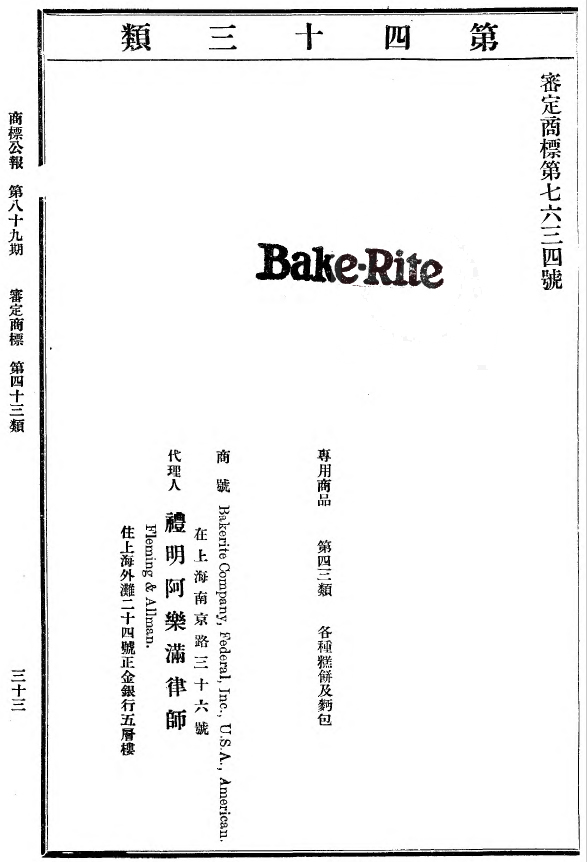
old Sullivan’s famous bread. In the same year the business even started distance selling via mail order across China. A sales channel Sullivan's had already pioneered and advertised in the mid-1910s. 

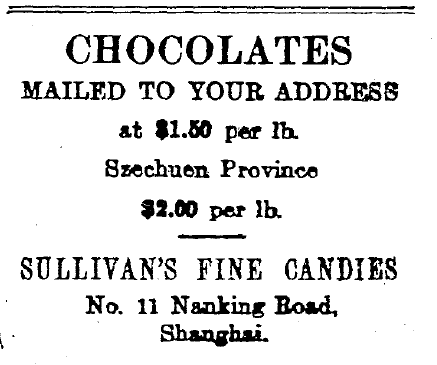
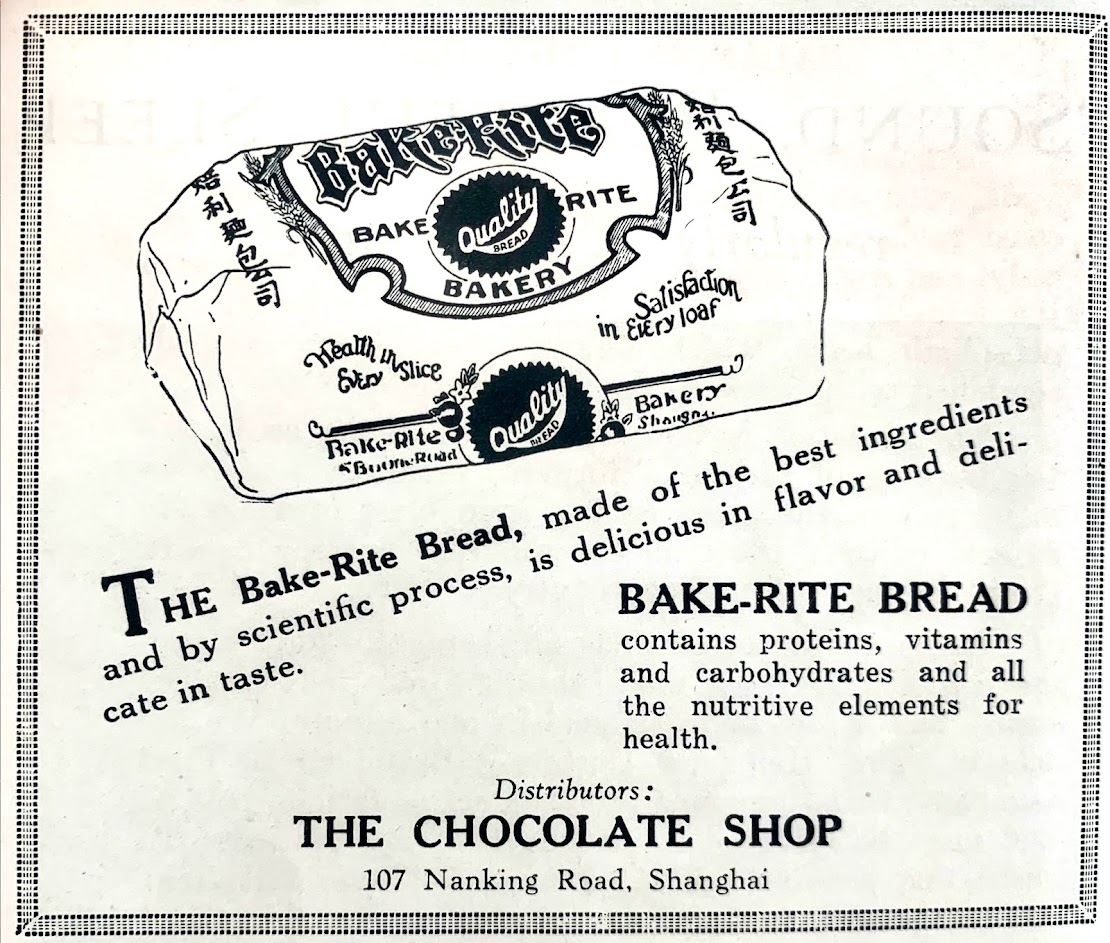
In 1931 Bakerite issued public shares and used the capital to construct a modern new 5 storey factory in the Western district of the International Settlement. It was opened in January 1933 on the corner of Sinza and Ferry Road (todays Xinzha and Xikang Road).
The China-Press referred to it as “China’s first scientific bakery” with a capacity of “6,000 lbs. of biscuits per day, 30,000 lbs. of bread and baking products, 4,000 lbs. of candy and 1,000 lbs. of chocolate”. 




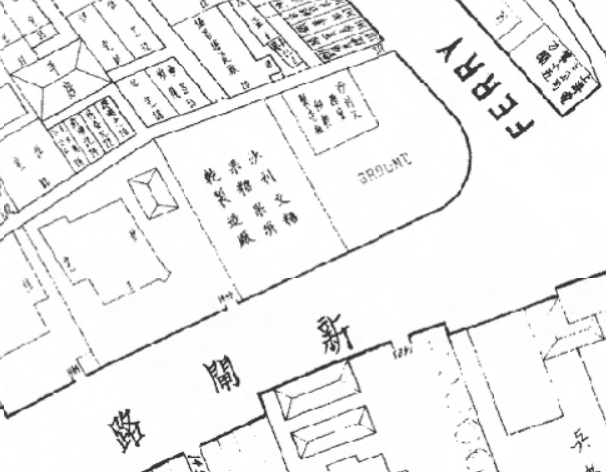

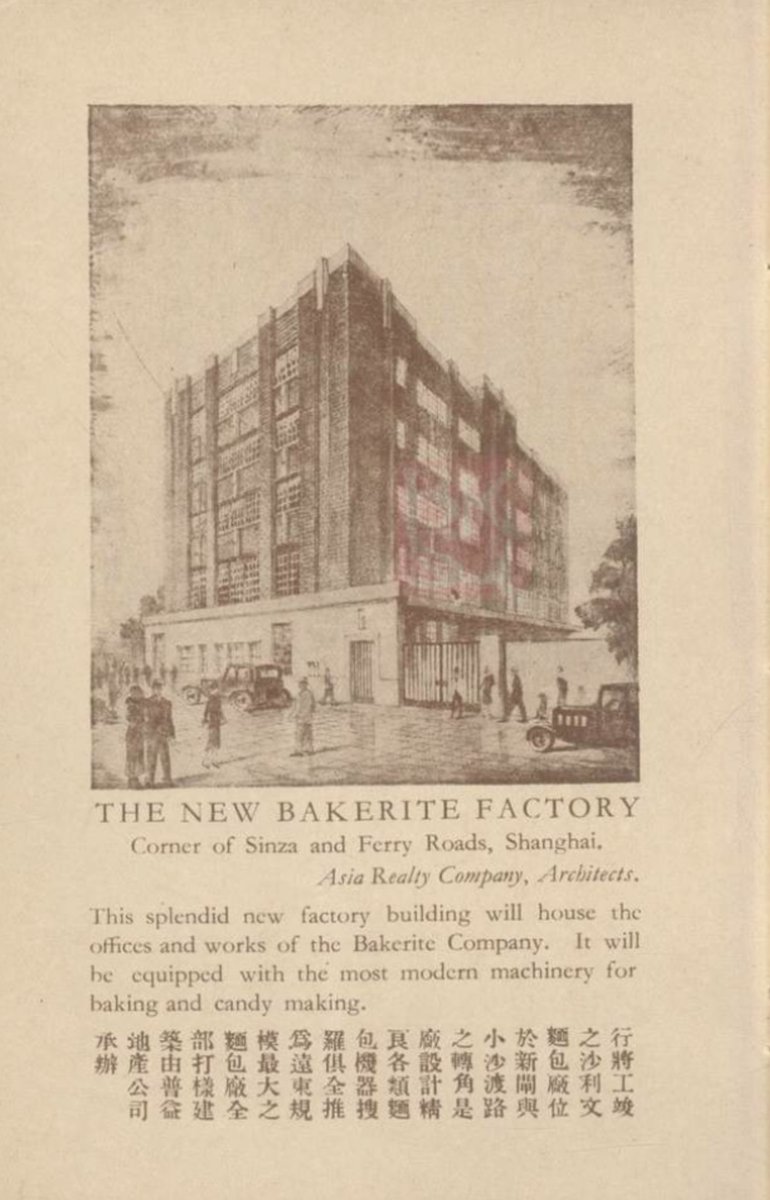
Sadly, the former "Candy King" of Shanghai, James David Sullivan, did not live to see the new Bakerite factory start production. He passed away on April 9 1932 at only age 58 in Honolulu, where he had resided since 1925. 

In 1933 the Chocolate Shop expanded to a third location on 883 Bubbling Well Road (todays Nanjing West Rd.) with its new "Western Branch" restaurant that had a capacity of an additional 100 seats. 

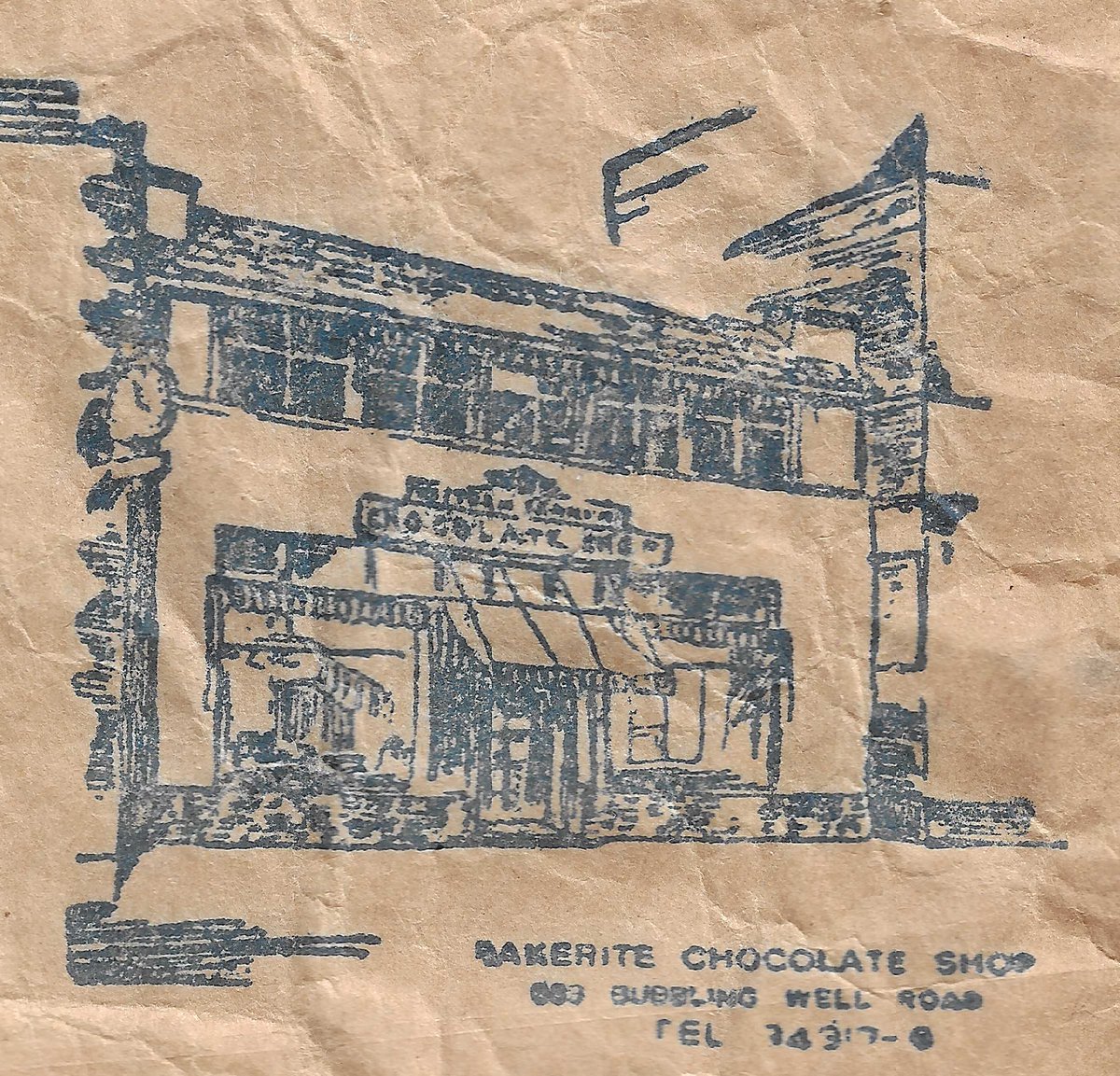

By that time its original “Eastern Branch” on 36 Nanking Road, had become the go-to place for Anglo-Americans in Shanghai & was immortalized in countless memoirs of old China. British author J. G. Ballard e.g. fondly recalled “Saturday ice cream sundaes at the Chocolate Shop” 

It also became the meeting point for an illustrious group of young American professionals, journalists and authors. Over salads and milk shakes, radicals like Harold Isaacs, Agnes Smedley and Edgar Snow (he met his wife in the Chocolate Shop) debated China’s future. J.B. Powell.. 

the crusading editor of the China Weekly Review, “Judge” Allman, who presided over the Mixed Courts and American businessmen like advertising pioneer Carl Crow, joined with American missionaries, chorus girls and the odd conman to enjoy the best ice-cream sodas in the city. 

In 1935 the infamous writer Emily Hahn caused a sensation when she walked into the Chocolate Shop with her pet gibbon Mr. Mills draped across her shoulders. 

It was all a great success story of a US businessman abroad, but in 1935 Ravens empire came crumbling down like a dry old cookie, in what Time Magazine reported as, “the most severe blow to US business prestige in China since the founding of the Shanghai International Settlement" 

In short, Raven’s four flagship Shanghai firms – the American-Oriental Banking Corporation, the American-Oriental Finance Corporation, the Raven Trust Company, and the Asia Realty Company – closed their doors unexpectedly in late May 1935 to cries of economic ruin and, later... 

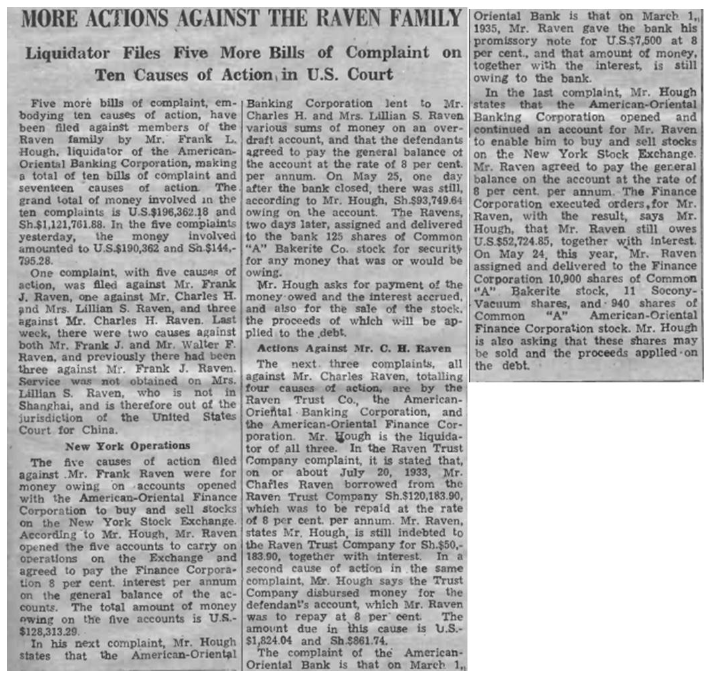
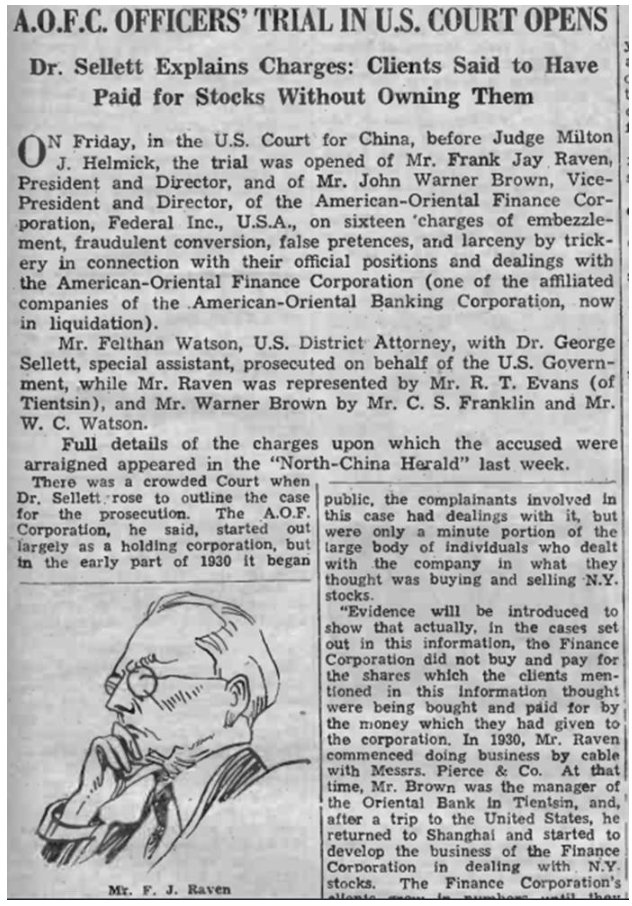
accusations of fraud and embezzlement. The result of the closure tarnished a name that took decades in Shanghai to build, bankrupted thousands of foreigners and Chinese alike, and ultimately landed Raven, a longtime American imperial elite, in a United States prison. 

When the liquidations of his flagship companies were complete in 1937 only the Asia Realty Company and Bakerite were spared closure and got restructured. As the new manager of Bakerite, Mr. J.L. Holbrook, was installed. At that time the business employed approx. 500 staff... 

and sold its products in its shops & restaurants as well as through wholesale across the Lower Yangtsze Valley to cities such as Nanjing, Suzhou and Hangzhou. Bakerite products were stocked by practically all Shanghai restaurants, bars, grocery stores and department stores. 



Besides the 3 Chocolate Shop restaurants Bakerite also catered for the U.S. Marines Club and two local cabarets. A considerable amount of private catering was also handled. In the late 1930s a 3rd Chocolate Shop branch was briefly opened on 530 Av Pétain (today's Hengshan Rd.) 

It soon was moved to No. 284 and in 1939 the “Grimmy Apartments” building was erected next door on No. 288. The Chocolate Shop downstairs became so popular that in the 1940s it was renamed to "Sullivan Apartments" (沙利文公寓) - a name the building still holds to this day. 

At its peak, Bakerite had become the most influential food production company in Shanghai. It's offering spanned across confectionery, candy, cookie, biscuit & bread with illustrious English consumer brand names. Meanwhile the Chinese just continued to call them "Shaliwen". 
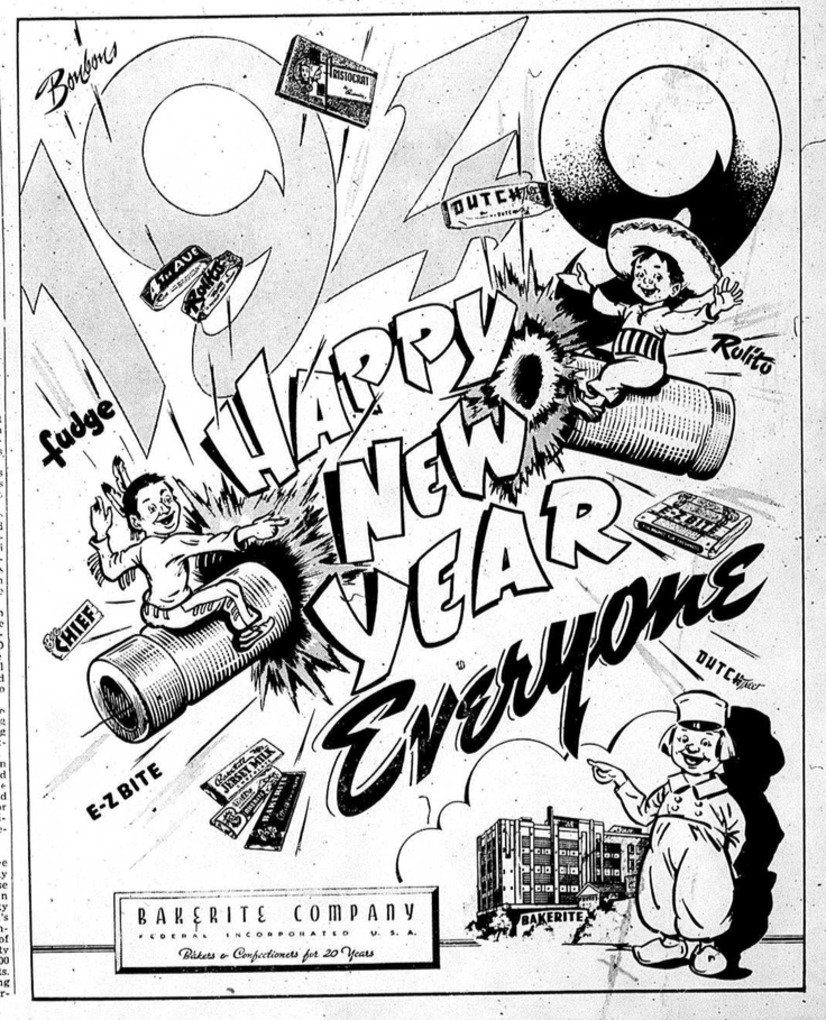
After the outbreak of the Pacific War in 1941, alas, the Bakerite factory and the Chocolate Shop restaurants were taken over by the Japanese army. In late 1945 business under American ownership briefly resumed but in 1949 the Western branch of the Chocolate Shop was closed... 

&the Eastern branch was taken over by its Chinese employees. In 1952 that branch was closed & in 1954 the Bakerite factory became Shanghai Yimin Food No. 4 Factory 上海益民食品四厂, which today is part of Bright Food Group 光明食品集团, the 2nd largest food producer in China. 

Even though this marked the end of Bakerite and the Chocolate Shop, its Chinese name, and with that the name of its original creator, J.D. Sullivan, persists to this day and has become a beloved part of Shanghai's culinary heritage: you can still take a bite into the past and... 

taste the nostalgia thanks to the Shanghai Shaliwen Food Co. Ltd., which continues to produce the eponymous biscuits, and hidden deep inside the remains of the old Bakerite factory on No. 1432 Xinzha Rd. even a small “Shaliwen” store stubbornly defies time. 
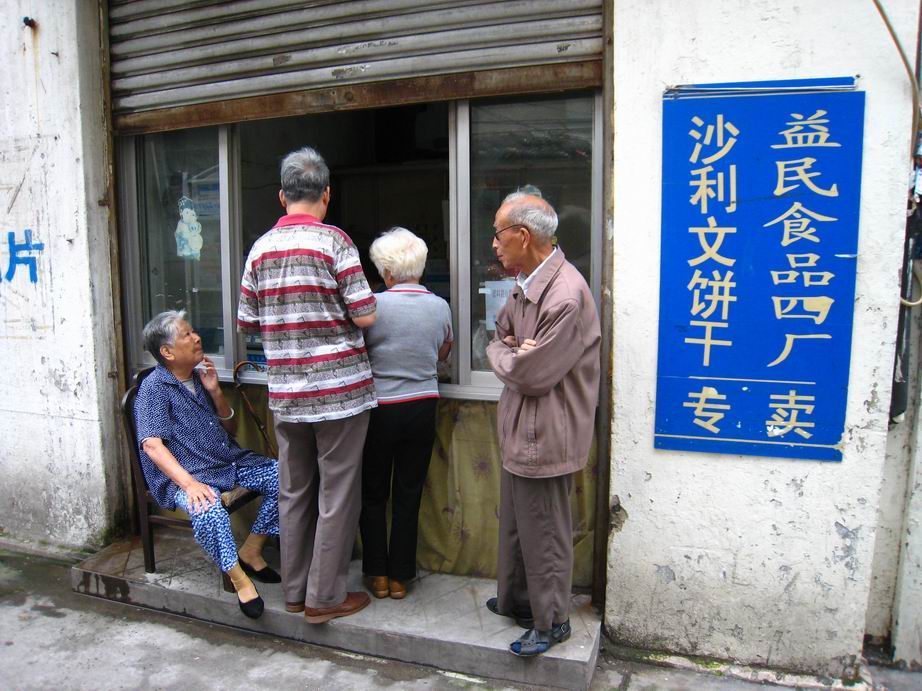
• • •
Missing some Tweet in this thread? You can try to
force a refresh


